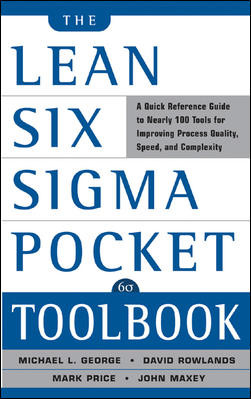Leading Lean: Ban the Hockey Stick!
Hockey sticks are essential
equipment for hockey players; whether amateur or professional, you can’t play
without them. But unless we’re making them, we should never see hockey sticks
in our business. The hockey stick I’m talking about here is the familiar
pattern of a sharp increase in output at the end of the month or
quarter.
This pattern is known as the hockey stick because it shows even process output until the end of the month or quarter. Then it spikes up sharply, like the business end of a hockey stick. The bad news is that no matter how many computer systems and scheduling controls are put in place, the hockey stick production curve is alive and well. Some of the largest companies on the planet still follow this horribly wasteful practice.
The good news is that it is relatively easy to rectify, once we understand how it begins.
When managers are behind on the production commitment near the end of the month or quarter, they do everything possible to accelerate output. They might reallocate resources and capacity toward the back end of the production process to get half-finished WIP to finished inventory. They schedule overtime. They postpone scheduled training or improvement events. They delay some capacity-draining changeovers or preventive maintenance. In general, they go through many different mental and physical gyrations to squeeze a little more out of the system for the last part of the month or quarter.
All of this and more is done in a desperate attempt to meet the production commitment. But the single-minded pursuit of that goal creates huge amounts of waste, both direct and indirect. The direct waste comes from unnecessary overtime and unnecessary consumption of resources. The indirect waste is insidious; it comes from a process that is not running at a constant rate.
If you do this, everything that you did at the end of the period will come back to bite you in the beginning of the next period. Postponed maintenance, changeovers and training events will have to be batched, cutting into production. The back-end WIP that was accelerated through the process is no longer there, so you have to refill the process from the beginning. This in turn leads to a temporary drop in output. In the end, you’ll achieve the same output over both periods, but you’ll consume considerably more resources doing so than you would have by sustaining a level output.
The real shame is that you’ll only get the “benefit” once from using the hockey stick to “cheat.” After that, it’s only about avoiding the pain of reversing the behavior. It only helps you once if you pull production ahead in month one, because you stole from month two to get the output for month one. As a result, you have to continue the hockey stick behavior just to stay even for month two, and every month thereafter as long as the addiction continues.
All it takes is one period of stopping the behavior to reverse this addiction. It will hurt the month you stop the behavior because you will still have the gap in the front part of the month and not be able to make it up in the back end. But you will have broken the cycle and can return to a less wasteful practice. The hockey stick behavior is such a serious manipulation of the numbers that manufacturers should have to report it in the footnotes of their public financials.
The 2009 economic crisis is causing many manufacturers to reduce output. If you’re trapped in hockey stick behavior, this is a great time to break the cycle and put countermeasures in place to ban the hockey stick from returning.
Jamie Flinchbaugh is a founder and partner of the Lean Learning Center in Novi, MI, and the co-author of The Hitchhiker’s Guide to Lean: Lessons from the Road. He shares his successful and varied experiences of lean transformation as a practitioner and leader through companies such as Chrysler and DTE Energy. He also has a wide range of practical experience in industrial operations, including production, maintenance, material control, product development and manufacturing engineering. Jamie is a graduate fellow of the Leaders for Manufacturing Program at the Massachusetts Institute of Technology, where his research thesis was on implementing lean manufacturing through factory design. He also holds a B.S. in Engineering from Lehigh University in Bethlehem, PA, and an M.S. in Engineering from the University of Michigan. To contact Jamie directly, go to the web site www.leanlearningcenter.com.
This pattern is known as the hockey stick because it shows even process output until the end of the month or quarter. Then it spikes up sharply, like the business end of a hockey stick. The bad news is that no matter how many computer systems and scheduling controls are put in place, the hockey stick production curve is alive and well. Some of the largest companies on the planet still follow this horribly wasteful practice.
The good news is that it is relatively easy to rectify, once we understand how it begins.
When managers are behind on the production commitment near the end of the month or quarter, they do everything possible to accelerate output. They might reallocate resources and capacity toward the back end of the production process to get half-finished WIP to finished inventory. They schedule overtime. They postpone scheduled training or improvement events. They delay some capacity-draining changeovers or preventive maintenance. In general, they go through many different mental and physical gyrations to squeeze a little more out of the system for the last part of the month or quarter.
All of this and more is done in a desperate attempt to meet the production commitment. But the single-minded pursuit of that goal creates huge amounts of waste, both direct and indirect. The direct waste comes from unnecessary overtime and unnecessary consumption of resources. The indirect waste is insidious; it comes from a process that is not running at a constant rate.
If you do this, everything that you did at the end of the period will come back to bite you in the beginning of the next period. Postponed maintenance, changeovers and training events will have to be batched, cutting into production. The back-end WIP that was accelerated through the process is no longer there, so you have to refill the process from the beginning. This in turn leads to a temporary drop in output. In the end, you’ll achieve the same output over both periods, but you’ll consume considerably more resources doing so than you would have by sustaining a level output.
The real shame is that you’ll only get the “benefit” once from using the hockey stick to “cheat.” After that, it’s only about avoiding the pain of reversing the behavior. It only helps you once if you pull production ahead in month one, because you stole from month two to get the output for month one. As a result, you have to continue the hockey stick behavior just to stay even for month two, and every month thereafter as long as the addiction continues.
All it takes is one period of stopping the behavior to reverse this addiction. It will hurt the month you stop the behavior because you will still have the gap in the front part of the month and not be able to make it up in the back end. But you will have broken the cycle and can return to a less wasteful practice. The hockey stick behavior is such a serious manipulation of the numbers that manufacturers should have to report it in the footnotes of their public financials.
The 2009 economic crisis is causing many manufacturers to reduce output. If you’re trapped in hockey stick behavior, this is a great time to break the cycle and put countermeasures in place to ban the hockey stick from returning.
Jamie Flinchbaugh is a founder and partner of the Lean Learning Center in Novi, MI, and the co-author of The Hitchhiker’s Guide to Lean: Lessons from the Road. He shares his successful and varied experiences of lean transformation as a practitioner and leader through companies such as Chrysler and DTE Energy. He also has a wide range of practical experience in industrial operations, including production, maintenance, material control, product development and manufacturing engineering. Jamie is a graduate fellow of the Leaders for Manufacturing Program at the Massachusetts Institute of Technology, where his research thesis was on implementing lean manufacturing through factory design. He also holds a B.S. in Engineering from Lehigh University in Bethlehem, PA, and an M.S. in Engineering from the University of Michigan. To contact Jamie directly, go to the web site www.leanlearningcenter.com.
Looking for a reprint of this article?
From high-res PDFs to custom plaques, order your copy today!





